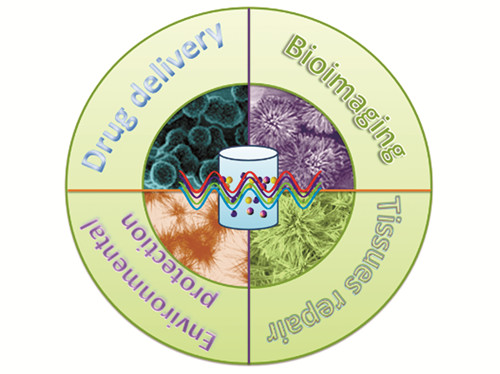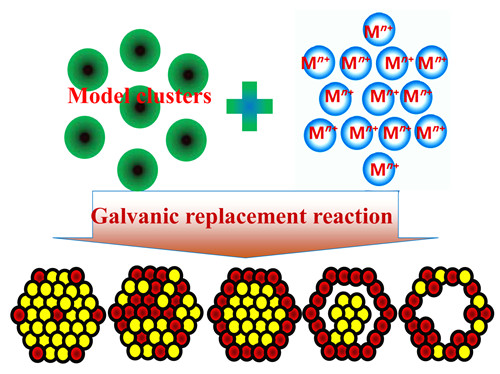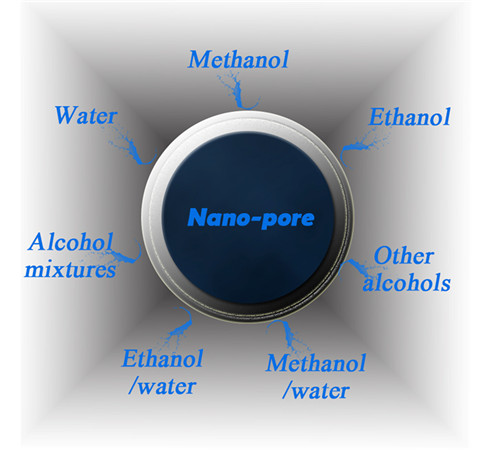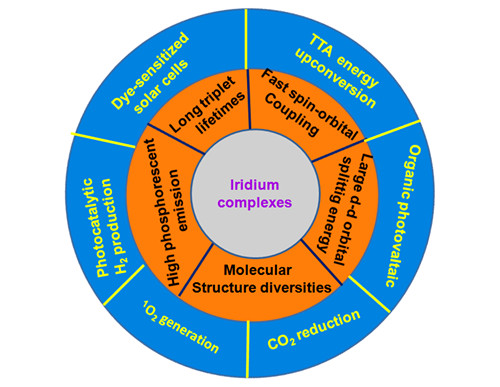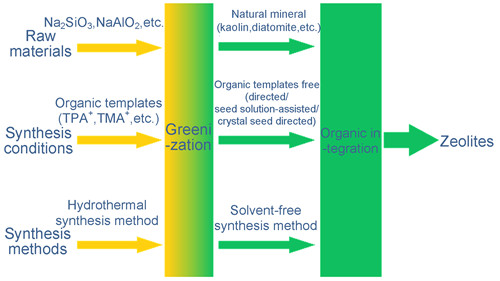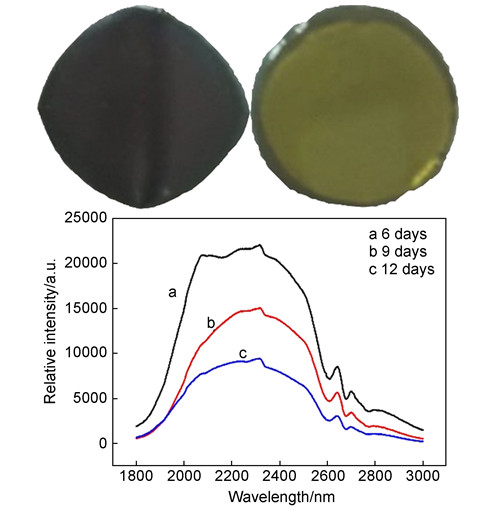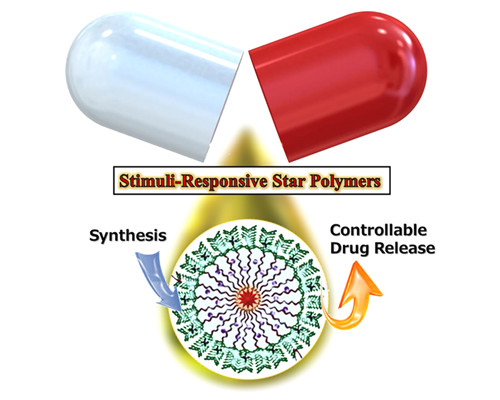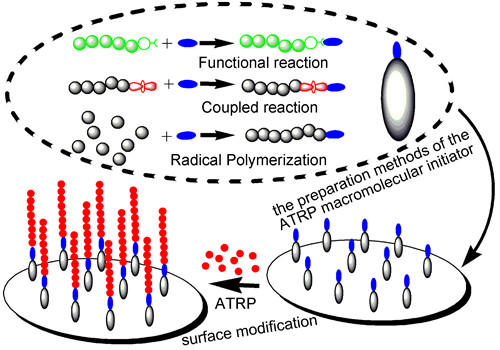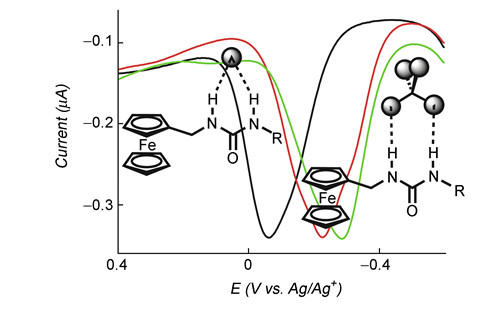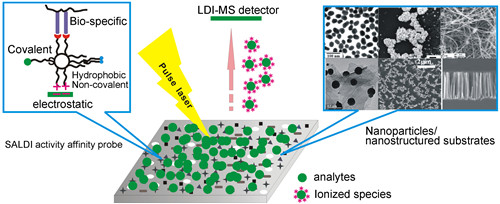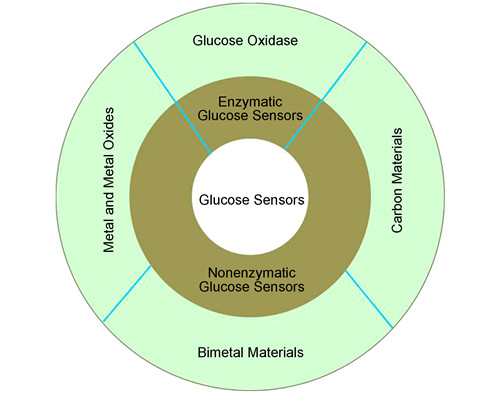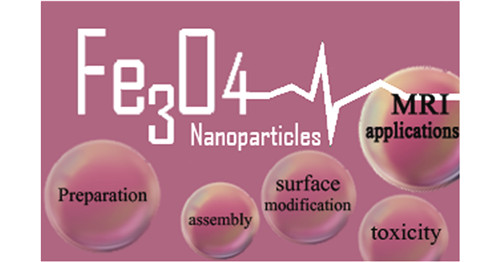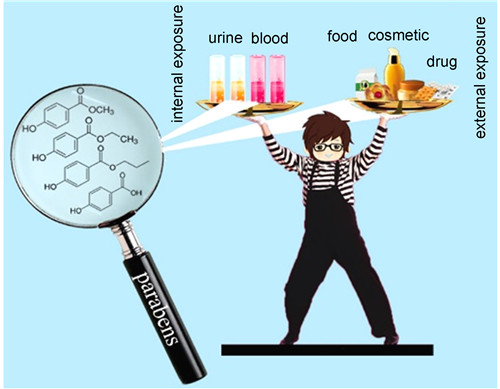Matrix-assisted laser desorption ionization mass spectroscopy (MALDI-MS) is a routine analytical characterization method, which was initially applied in the analysis of biological macromolecules, such as protein, polypeptide, polysaccharide and nucleic acid. However, MALDI-MS does not allow the sensitive detection of analytes in the low mass region (
m/z < 700) because of strong background signals arising from the matrix. Recently, the organic matrix-free laser desorption ionization mass spectrometry based on nanomaterials (which is also known as surface-assisted laser desorption ionization mass spectrometry, SALDI-MS) has effectively solved the above problem. With the use of nanomaterial-based MS technique, the detectable mass range of SALDI-MS has been extended from the low-mass region for the analysis of small molecules to the high-mass region for the analysis of large molecules. The nanomaterial-based MS technique transfers energy through the nanometer material with no interference peaks between the matrix and analyte in the low molecular weight. In addition, SALDI-MS also affords several advantages, such as simple sample preparation, high signal-to-noise ratio, high salt tolerance, the improved reproducibility of peak intensities and the possibility of quantitative analysis, showing good prospects. In this paper, we mainly describe and review in detail four types of nanomaterials developed for application in SALDI-MS detection and imaging that were reported in recent years, including carbon nanomaterials (fullerenes, carbon nanotubes, graphene and graphene oxide), silicon nanomaterials (porous silicon, silicon nanofiber, silica nanoparticles), other nanoparticles (including metal nanoparticles, metal oxide nanoparticles, inorganic nanoparticles and quantum dots) and nanoporous materials. Besides, the energy transfer mechanism of nanomaterials in the application of SALDI-MS is discussed. Finally, the future research content and direction as well as the important problem to be studied are discussed.
Contents
1 Introduction
2 Application of different nanomaterials in SALDI-MS
2.1 Carbon-based nanomaterials for SALDI-MS
2.2 Silicon-based nanomaterials for SALDI-MS
2.3 Other nanoparticles for SALDI-MS
2.4 Hybrid nanoporous materials for SALDI-MS
3 Mechanism of SALDI-MS
4 Conclusion and outlook









